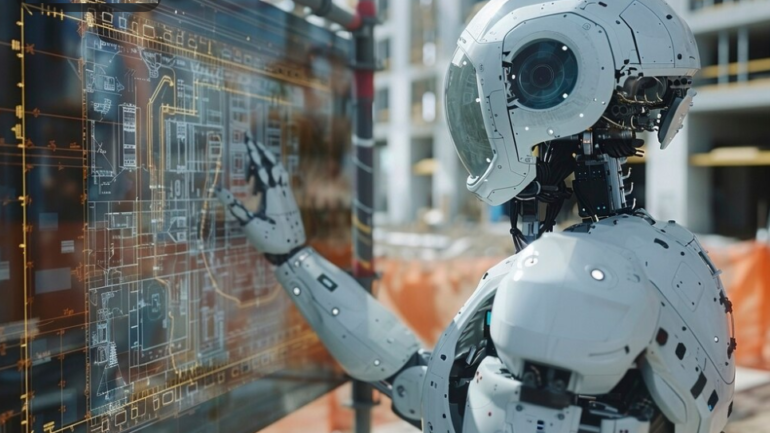The State of AI

The AI optimism train rages on, with both volume in AI research and investment in technical advancements rising substantially in the last few years. India, while a powerhouse of talent, lags significantly in investment. All this and more in a short primer to Stanford University’s 2024 AI Index Report.
Industry dominates AI research landscape, US leads innovation
One of the primary aspects the Stanford study reveals is the significant dominance of industry in pioneering research and development endeavours. In 2023, industry spearheaded the creation of 51 notable machine learning models, overshadowing academia’s contribution of only 15 models. However, collaborative efforts between industry and academia surged, resulting in 21 notable models, marking a historic high.
Furthermore, the report also highlights a substantial increase in the release of foundation models, totalling 149 in 2023, more than double the previous year’s count. Notably, 65.7% of these models were open-source, showcasing a burgeoning trend towards openness and collaboration within the AI community.
However, the pursuit of cutting-edge AI comes with unprecedented costs. Training expenses for state-of-the-art models have soared, exemplified by OpenAI’s GPT-4, which incurred an estimated $78 million in compute costs, and Google’s Gemini Ultra, which amounted to a staggering $191 million.
Geopolitically, the United States emerges as a frontrunner in AI innovation, outstripping competitors such as China, the European Union, and the U.K. In 2023, US-based institutions birthed 61 notable AI models, underscoring the nation’s prowess in driving technological advancements.
Moreover, the proliferation of AI patents reflects the intensifying global competition in the field. Worldwide AI patent grants surged by 62.7% from 2021 to 2022, with China seizing a dominant position, accounting for 61.1% of patent origins in 2022, surpassing the United States. This shift marks a departure from the US’s previous stronghold, as its share of AI patents dwindled from 54.1% since 2010.
The report further discusses the exponential growth of open-source AI research, evidenced by the burgeoning number of projects on GitHub. Since 2011, AI-related projects on the platform have seen a consistent uptrend, reaching approximately 1.8 million in 2023, with a remarkable 59.3% surge in the preceding year alone. This surge is mirrored in the total number of stars garnered by AI projects on GitHub, which more than tripled from 4.0 million in 2022 to 12.2 million in 2023.
Additionally, the volume of AI publications escalated further, nearly tripling from approximately 88,000 in 2010 to over 240,000 in 2022. While the increase in the last year was modest at 1.1%, it underscores the sustained momentum in AI research and dissemination.
AI the smartest it has ever been, but human intervention gaining prominence
While AI’s capabilities have soared, surpassing human performance in various domains like image classification, visual reasoning, and English understanding, it still lags behind humans in complex tasks such as competition-level mathematics and visual commonsense reasoning. The emergence of multimodal AI, however, heralds a new era of versatility. Traditionally, AI systems excelled in either text comprehension or image processing, but recent breakthroughs have birthed robust multimodal models like Google’s Gemini and OpenAI’s GPT-4. These models exhibit remarkable flexibility, adept at handling images, text, and even audio.
Another aspect highlighted by the study is the symbiotic relationship between AI and data – pivotal for technical advancements. Innovative models like SegmentAnything and Skoltech are leveraging AI to generate specialised data, crucial for tasks like image segmentation and 3D reconstruction. This influx of data not only enhances current AI capabilities but also fuels future algorithmic improvements.
Human evaluation too has gained prominence in benchmarking AI progress. Generative models producing high-quality content have prompted a shift towards human-centric evaluations like the Chatbot Arena Leaderboard, reflecting the growing importance of public sentiment in tracking AI advancements.
Additionally, the fusion of language modelling with robotics has birthed more adaptable robotic systems like PaLM-E and RT-2. Beyond enhancing robotic capabilities, these models can pose questions, marking a significant stride towards real-world interaction.
Continuing technical research in agentic AI (focusing on autonomous AI agents) shows promising developments. These agents demonstrate proficiency in mastering complex games like Minecraft and undertaking real-world tasks such as online shopping and research assistance.
Finally, the performance disparity between closed and open language model models is notable, with closed models exhibiting a median performance advantage of 24.2% across ten AI benchmarks. This discrepancy bears implications for AI policy discussions, underscoring the importance of understanding model openness in shaping AI development pathways.
India high on AI Skill Penetration, Talent, low on Investment
India leads globally in relative AI skill penetration and ranks among the top four nations in relative AI hiring rate. Despite this, its concentration of AI talent remains low, albeit exhibiting an exhilarating 263% growth rate – the fastest globally from 2016 to 2023.
In terms of research, India (19% of total) closely trails the US (23%) in GitHub AI projects, but significantly lags in AI patents, contributing a mere 0.2% from 2010 to 2022.
Private investments in AI in India fell significantly short compared to the US, with only $9 billion invested from 2013 to 2023, in stark contrast to the US’s $335 billion. Moreover, in 2023, India saw a meagre 45 newly-funded AI companies, a stark difference from the US’s 897.
India also saw only a 2% rise in AI university study programs in English, considerably lower than the 12% seen in the UK and 6% in the US.
Find the Stanford AI Index report 2024 here.


